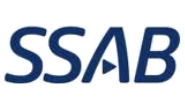Steel Mills

Section 232 Hangs Over HARDI Heads
Written by Tim Triplett
July 18, 2017
Like the rest of the steel market, wholesalers of galvanized steel and other products used in HVAC applications are stuck in an uncomfortable wait-and-see mode as the Section 232 drama plays out in Washington.
In the monthly steel conference call hosted today by the Heating, Air-conditioning, and Refrigeration Distributors International, HARDI members reported anxiety over possible trade action and its potential effect on steel prices, inventories and availability. “Everyone is waiting for Section 232 to be lifted off their shoulders,” said one participant in the call.
![]() John Packard, the publisher of Steel Market Update, said there is no sure way to predict how Section 232 will play out. The trade action is facing growing opposition from steel-consuming industries, and even officials within the government. It appears exports from friendly trading partners such as Canada, Mexico, Australia and Europe will be exempted from the restrictions in some way. The administration may use a quota system, rather than across-the-board tariffs, designed to target offending counties such as such as South Korea, Taiwan and India that have continued to ship steel after being hit with AD/CVD duties. “President Trump is a wild card. I don’t know what he is going to do,” he added. “His primary goal may be to address the trade deficit and use steel as a negotiating tool to get the rest of the world to open up and negotiate with us.”
John Packard, the publisher of Steel Market Update, said there is no sure way to predict how Section 232 will play out. The trade action is facing growing opposition from steel-consuming industries, and even officials within the government. It appears exports from friendly trading partners such as Canada, Mexico, Australia and Europe will be exempted from the restrictions in some way. The administration may use a quota system, rather than across-the-board tariffs, designed to target offending counties such as such as South Korea, Taiwan and India that have continued to ship steel after being hit with AD/CVD duties. “President Trump is a wild card. I don’t know what he is going to do,” he added. “His primary goal may be to address the trade deficit and use steel as a negotiating tool to get the rest of the world to open up and negotiate with us.”
The HARDI members agreed that demand for HVAC products is solid, fueled by a strong construction sector. Prices for steel have seen little movement in the past month, though they have been on a downward direction since January. The mill price announcements in June had little effect. Steel imports are still arriving on U.S. shores, though usually with stipulations that prices may be adjusted in the event of new tariffs. Thus, imports are keeping domestic prices in check to a degree, the wholesalers said.
One southern wholesaler said he is even seeing a little pent-up demand from buyers who have been waiting to see what unfolds in Washington. His company’s shipments are up double digits from this time last year. But he is troubled about the second half. “Like everyone else on the call, we have to wait and see what happens with Section 232. The reality is we are just one tweak away from a steel crisis we haven’t seen since 2008,” he said, expressing concern that further restrictions on U.S. imports could lead to a steel shortage and perhaps even mills putting customers on allocation.
The longer the Trump administration holds off on a Section 232 decision, the more imports will slow. Import levels could decline to less than 2 million tons, Packard estimates. “When you consider that a good portion of that is slabs going to the steel mills, that’s not much inventory going into service centers and end users.”
For most HARDI members, inventory levels currently range from 2.0 to 3.0 months on hand, well above the most recent figures from the Metals Service Center Institute. MSCI reported flat roll inventories at service centers averaging a surprisingly low 1.91 months, and coated steels even lower at 1.64 months. “With galvanized inventories at just 1.64 months, and lead times at 7-10 weeks, you’d have no choice but to order steel right now, and lots of it,” Packard said. He added that Steel Market Update surveys do not indicate that service center inventories are under 2.0 months of supply.
Some HARDI members have purchased some extra stock, betting that President Trump will follow through with tariffs or quotas despite the widespread opposition. “We did bump inventories up slightly in anticipation of a favorable 232 ruling for the domestic mills,” commented one executive. But another urged caution because of the unpredictable nature of the market. “In the old days, there was a reward for having a little extra steel right before a runup in prices. Today, there’s not as much reward as there is risk in having a lot of inventory,” he said.
Indeed, if the Trump administration does not act on Section 232 as widely expected, the downturn in steel prices could accelerate. But nothing is certain
“The lack of any good insight on our part is really a reflection of the current steel market,” summed up one wholesaler.
Steel Market Update participates in a monthly steel conference call hosted by HARDI. The call is dedicated to a better understanding of the galvanized steel market. The participants are HARDI member companies who are wholesalers, service centers and manufacturing companies that either buy or sell galvanized sheet products used in the HVAC industry.

Tim Triplett
Read more from Tim TriplettLatest in Steel Mills

Algoma to conclude planned plate mill outage at month’s end
Algoma Steel Inc. expects to wrap up a previously announced outage on its plate mill by the end of this month, a company spokeswoman said. The outage is part of the Canadian flat-rolled steelmaker’s $130 million CAD ($95 million USD) modernization project. It began in mid-April.

SDI execs detail April outage at Sinton, address ‘robust’ HR-CR spread
Steel Dynamics Inc. (SDI) executives said the company's Sinton, Texas, sheet mill should be able to increase melt capacity after an outage earlier this month. Sinton should see "additional improvements in production" after taking "several maintenance days in April," Barry Schneider, SDI president and COO, said in a Q1 earnings conference call on Wednesday.

SSAB Americas Q1 results hit by lower plate prices, demand
Lower demand and prices for steel plate impacted SSAB Americas’ results in the first quarter, Swedish parent company SSAB said in its Q1'24 interim report.

Cliffs working on a transforming solution for Weirton mill
Cleveland-Cliffs is working on a solution for its recently idled mill in Weirton, W.Va., that will address pent-up demand for transformers, increase the need for its electrical steel, and get its workforce back to work.

Cliffs being selective with auto clients on strength in sector
With strength in the sector and customers needing the product it produces, Cleveland-Cliffs’ chief executive says the company will be more selective with the automotive customers it chooses to serve.
